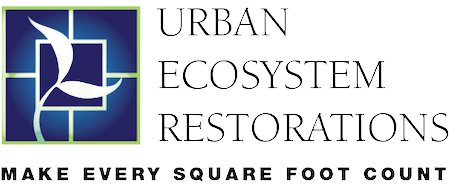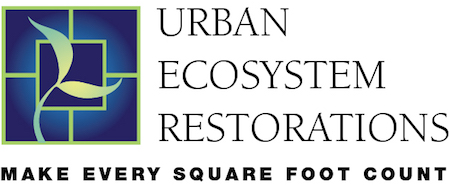By Diane Cameron, UER Expert Advisory Panel Member
April 29, 2017
As I mentioned in Part I of this blog series about forest patches, the importance of preserving, restoring, and expanding our urban forest patches cannot be understated. One way to do this is to support the preservation of natural resources in the Montgomery Parks’ PROS Survey. But there are many other ways to help and get involved:
1. Support increased funding for woodland restoration in our parks.
Preservation of natural resources often requires restoration, such as native plant and soil rehabilitation, removal of exotic invasive plants without the use of pesticides, and ongoing deer management. Exotic invasive plants, including vines, strangle young oaks and other trees, while deer eat the young trees and understory plants for breakfast, lunch, and dinner. As a result, some of the park woods look bedraggled and sparse. Woodland restoration is ongoing, and, needs to be stepped up county-wide. This likely means an increase in the Parks budget to fund the staff and other requirements to undertake significant restoration and protection of woods and other natural areas, and I strongly support such Parks budget increases. In addition to supporting increased budget allocations for Montgomery Parks, residents can also make tax-deductible contributions to the Montgomery Parks Foundation, which supports our County parks and allows donors to specifically designate their donations for specific uses like woodland and trail restorations.
2. Plant trees – for forest canopy and understory – in your yard.
Residents whose yards lack native trees and shrubs need to get planted – so that we can create corridors that connect our yards to our local parks and that connect us with our neighbors on cultural and social levels. For a list of programs that offer free trees, including Tree Montgomery – where the County plants and cares for your new tree – go to: http://www.montgomerycountymd.gov/green/trees/plant-a-tree.html
3. Change your landscaping practices (and save money in the process!)
a. Go organic and leave the pesticides behind. Planting native trees and shrubs not only helps expand forest patches but it is also one step that residents can take towards organic and healthy yard care. Montgomery County is poised to become a national leader in organic yard and turf care, with its enactment of 2015 of the Healthy Lawns Law. This new law kicks in for private landowners on January 1, 2018. A future post will discuss this law in detail and its relationship to urban forest patches.
b. Create no-mow/no-leaf-blow zones. By creating large areas that mimic native shrub and forest habitat, residents can expand native woods incrementally rather than shrink them, and in the process, increase stormwater absorption (reducing runoff). Rather than mowing and leaf-blowing, the woodland edge zones can be allowed to naturally regenerate (e.g. letting the leaves stay where they fall and letting native plants and trees re-establish); when this happens, only the need for regular exotic/invasive plant removal remains. In fact, mowing and blowing can increase susceptibility to exotic plant colonization and is less healthy for plant communities and trees.
4. Use your consumer advocacy power: encourage private companies to create and protect ecological areas and to support organic land care.
Urge local companies and non-profits to provide natural area protection and restoration services, and organic lawn care, and to support Montgomery Parks in its effort to move to sustainable landscaping practices. For more information on Montgomery Parks’ transition to pesticide-free parks, visit: http://www.montgomeryparks.org/about/parks/pesticides/.
5. Advocate for legal protections for precious, but unprotected, natural areas.
The portions of existing (but unprotected) woods that are now at or adjacent to local parks, particularly at Little Bennett Regional Park and other regional parks, must be placed into permanent protected legal status. Unprotected forest patches are at risk, and if lost, can damage the health of the forests around them. Creating these protections requires popular support and advocacy, which I will discuss in more detail in a subsequent blog post.
It’s important to remember that there are so many actions we can take as Montgomery County residents to improve our local and regional ecosystems. Be sure to find out more about what you can do to make a difference.

